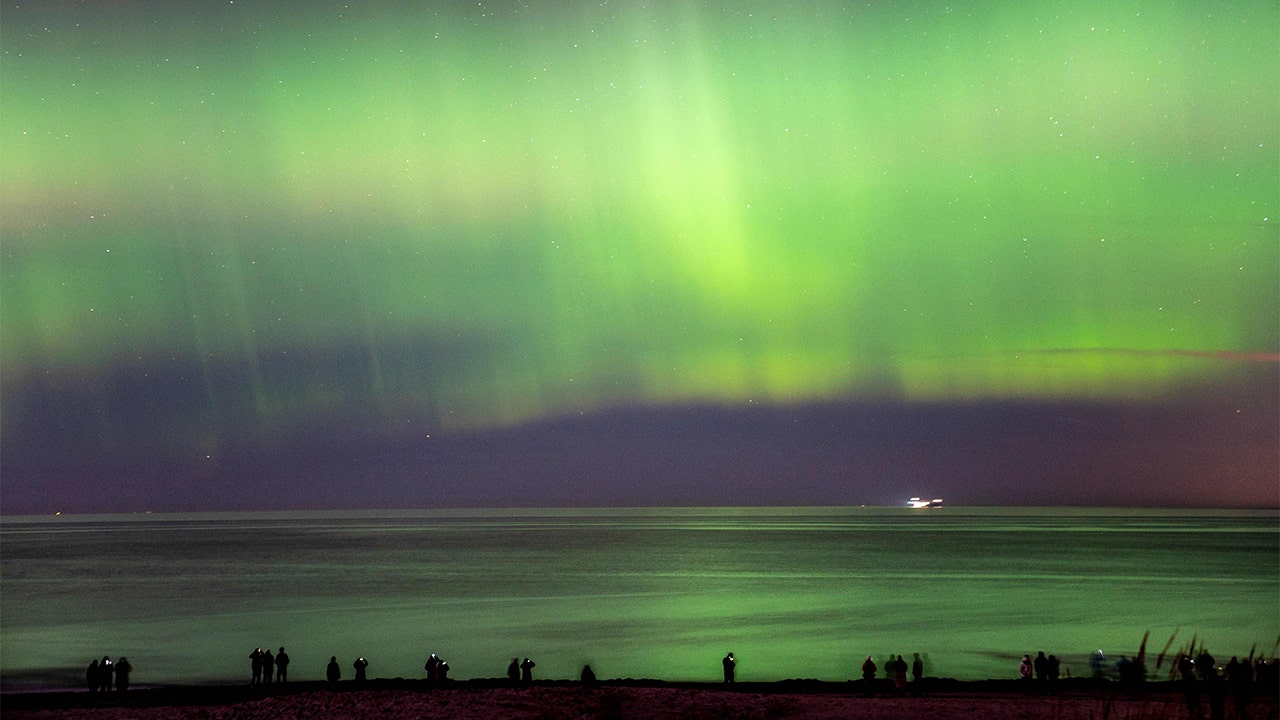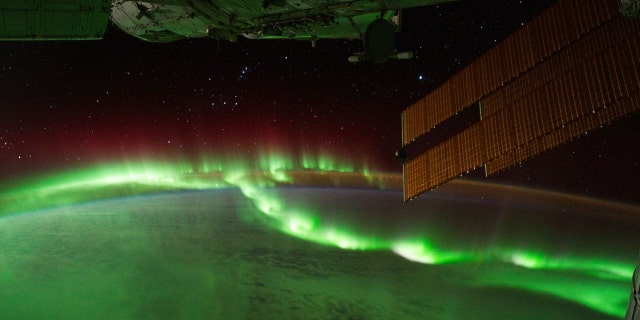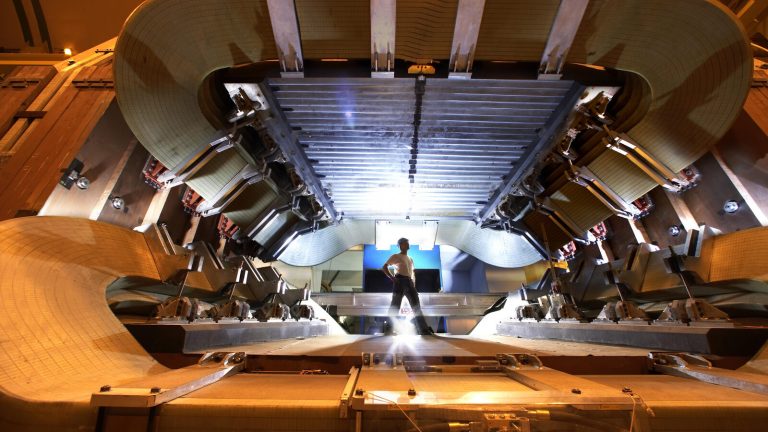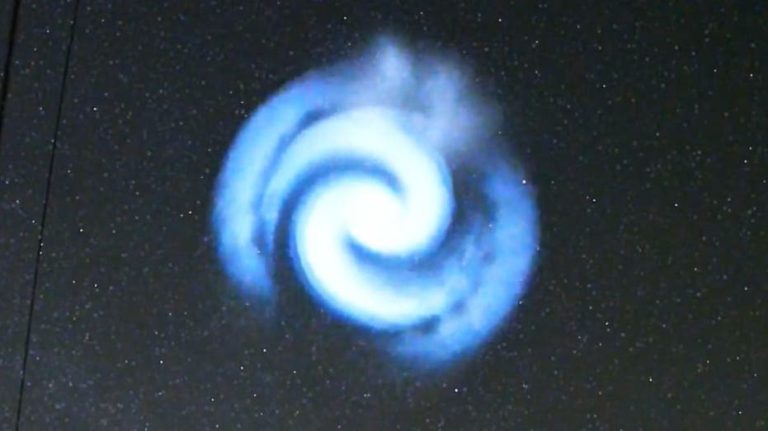
A large part of the United States may be able to view the Northern Lights, or aurora, from Sunday evening into the early hours of Monday morning as a powerful geomagnetic storm hits Earth.
The National Oceanic and Atmospheric Administration registered a level four out of five on the geomagnetic storm impact scale as nightfall approached on Sunday, indicating that aurora could be visible as far south as Alabama if weather permits.
A Coronal Mass Ejection (CME), which the NOAA describes as a “billion tons of plasma ejected from the sun,” erupted toward the Earth on Friday.
“When a CME arrives at Earth, it can produce some of the biggest geomagnetic storms and thus, some of the brightest and most active auroras that extend furthest toward the equator,” the NOAA explains.

FILE PHOTO: The Northern Lights dazzled the skies over Anchorage, Alaska in February. (BRIAN BRETTSCHNEIDER via APTN)
Northern states stretching along the U.S.-Canadian border from Washington to Maine should be able to see the aurora in places where there is little cloud cover, though the strength of this geomagnetic storm means that states like Alabama and California may also be able to see auroral displays.
RETIRED SPACECRAFT WILL RE-ENTER EARTH’S ATMOSPHERE WITH SOME RISK TO HUMANS, NASA SAYS
The best time to view the aurora is within about one hour of midnight, so 10:00 p.m. to 2:00 a.m. local time, according to the NOAA. The geomagnetic activity is most visible when there is little cloud cover and no light pollution from artifical sources.

FILE PHOTO: Auroral activity seen from the International Space Station. (NASA)
Even in areas where auroral activity won’t be directly overhead, people still may be able to see the geomagnetic activity by looking north from a high-altitude spot. A person can see the aurora as far as 600 miles north of their current location if the view is unobstructed.
CLICK HERE TO GET THE FOX NEWS APP
While the Northern Lights may be beautiful, the powerful geomagnetic storm could disrupt satellite navigation and cause widespread voltage control problems.







